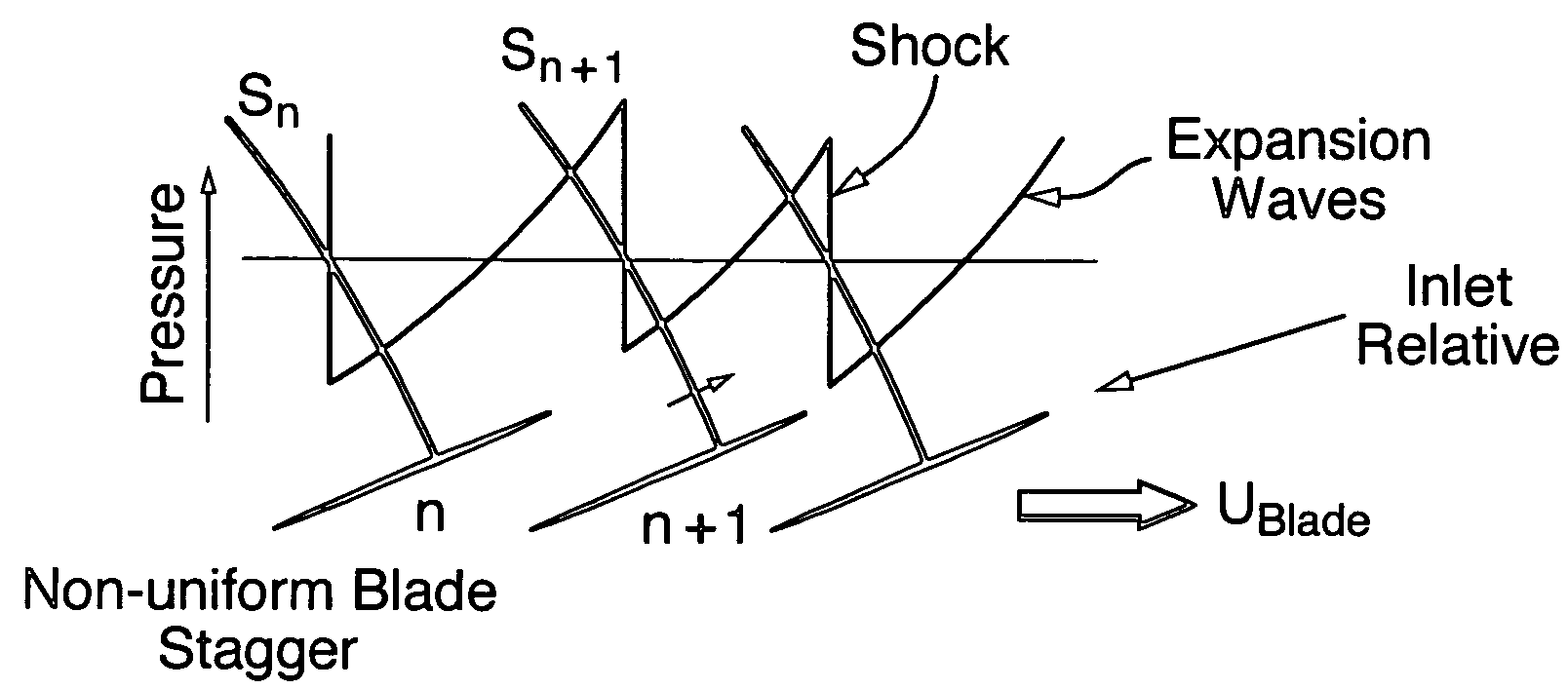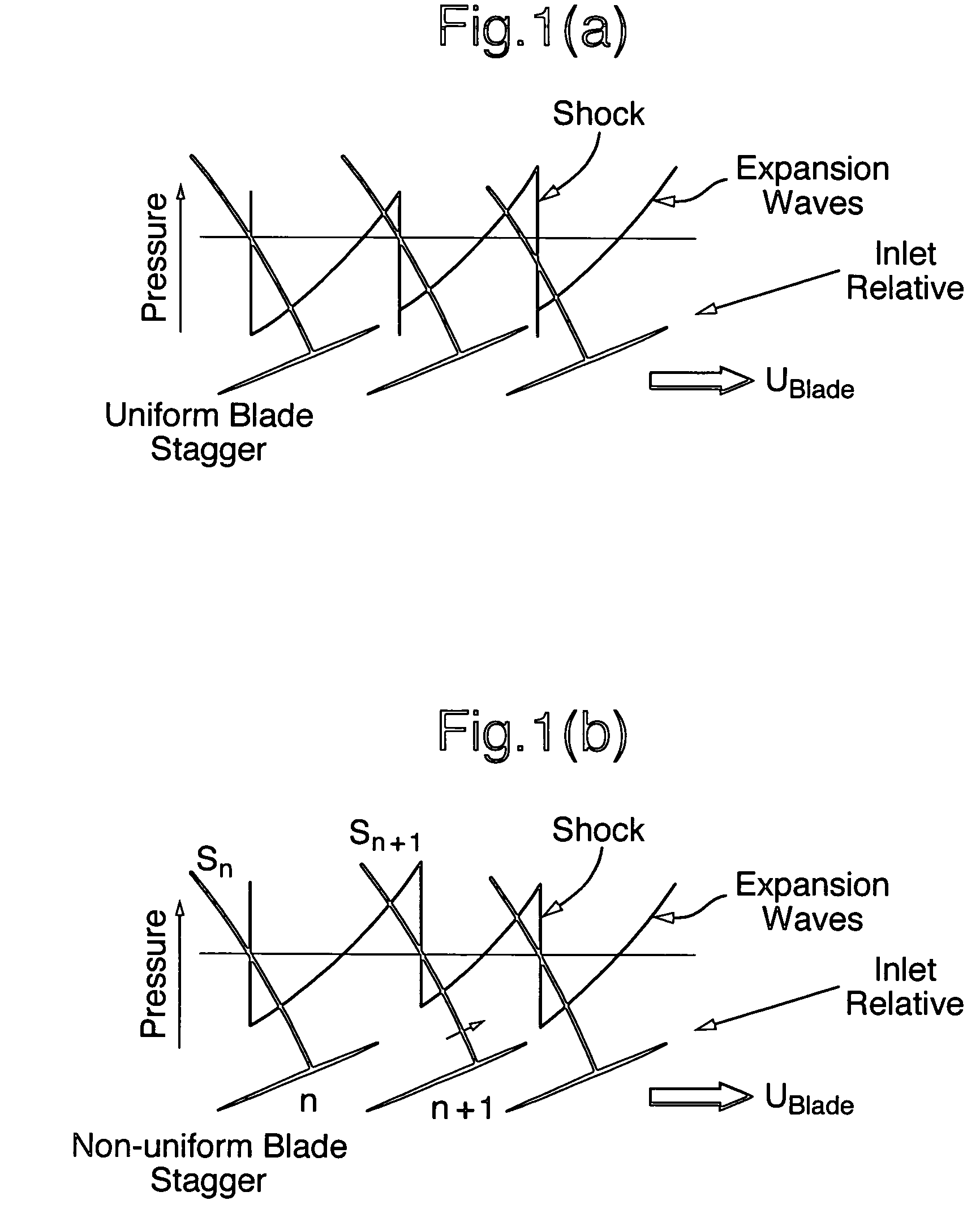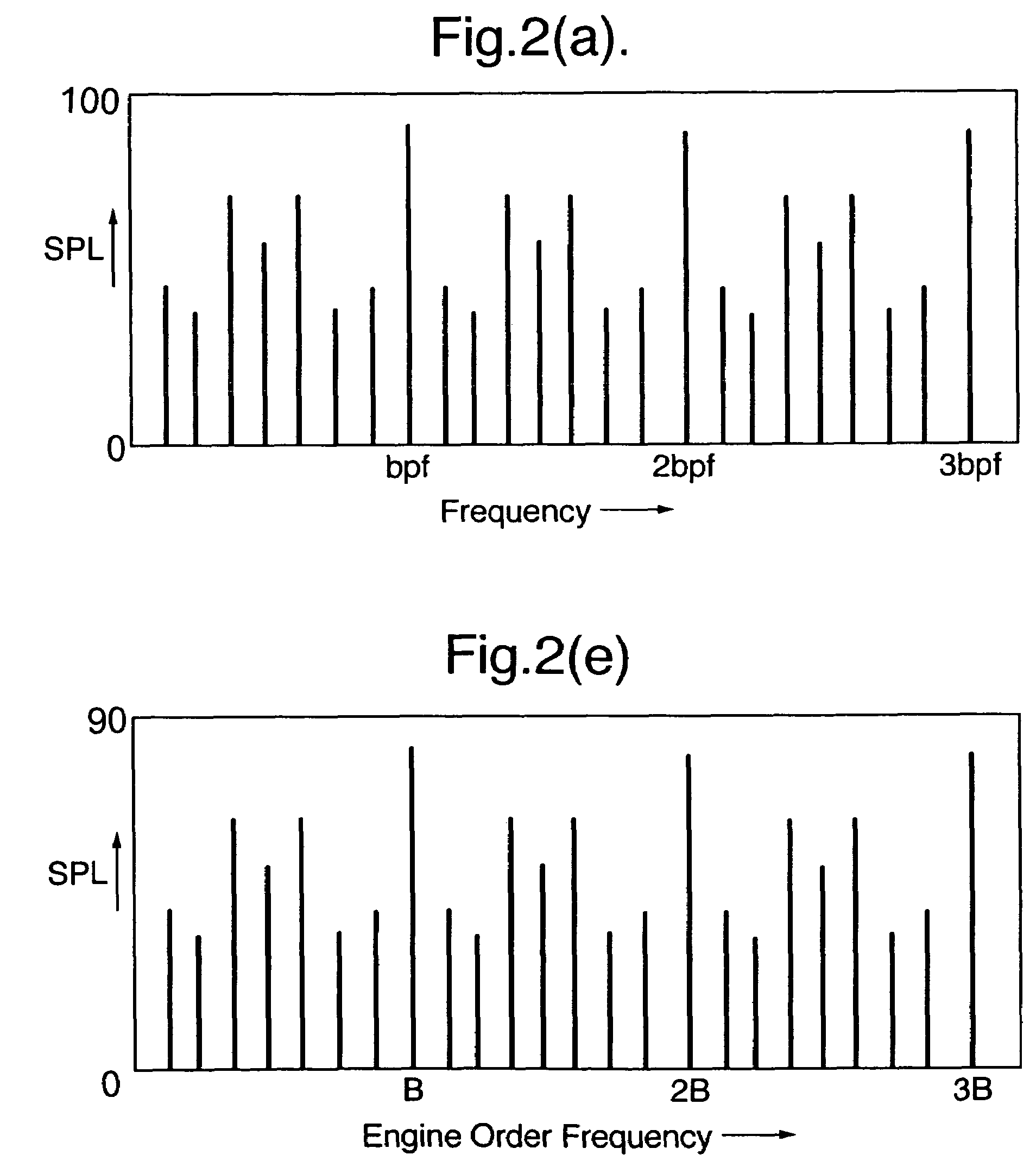Noise control
- Summary
- Abstract
- Description
- Claims
- Application Information
AI Technical Summary
Benefits of technology
Problems solved by technology
Method used
Image
Examples
Embodiment Construction
[0031]FIG. 3 is a schematic of a typical gas turbine engine. The engine comprises a fan assembly that has a plurality of blades 2 mounted on a disc or hub 4. The fan rotates within a housing 6 and helps to push air rewards thereby generating thrust.
[0032]Referring to FIG. 2a, if a fan assembly consists of B unequal stagger angles, the buzz-saw noise spectrum is predicted using the stagger angles of the blades in order around the disc according to equation 2 above for each engine order (r) of blades. FIG. 2a shows a typical predicted buzz-saw noise spectrum obtained in this way. We note that the spectral character is symmetric about engine orders 0.5B, 1.5, 2.5B and 3.5B (in fact this is true also for 4.5B, 5.5B, . . . etc.). At each engine order B or multiple of B, the noise is that of the rotor-alone blade passing noise which would be produced even if there were no blade to blade differences. At other engine orders the noise is produced by the blade to blade differences (in this ca...
PUM
 Login to View More
Login to View More Abstract
Description
Claims
Application Information
 Login to View More
Login to View More - R&D
- Intellectual Property
- Life Sciences
- Materials
- Tech Scout
- Unparalleled Data Quality
- Higher Quality Content
- 60% Fewer Hallucinations
Browse by: Latest US Patents, China's latest patents, Technical Efficacy Thesaurus, Application Domain, Technology Topic, Popular Technical Reports.
© 2025 PatSnap. All rights reserved.Legal|Privacy policy|Modern Slavery Act Transparency Statement|Sitemap|About US| Contact US: help@patsnap.com



